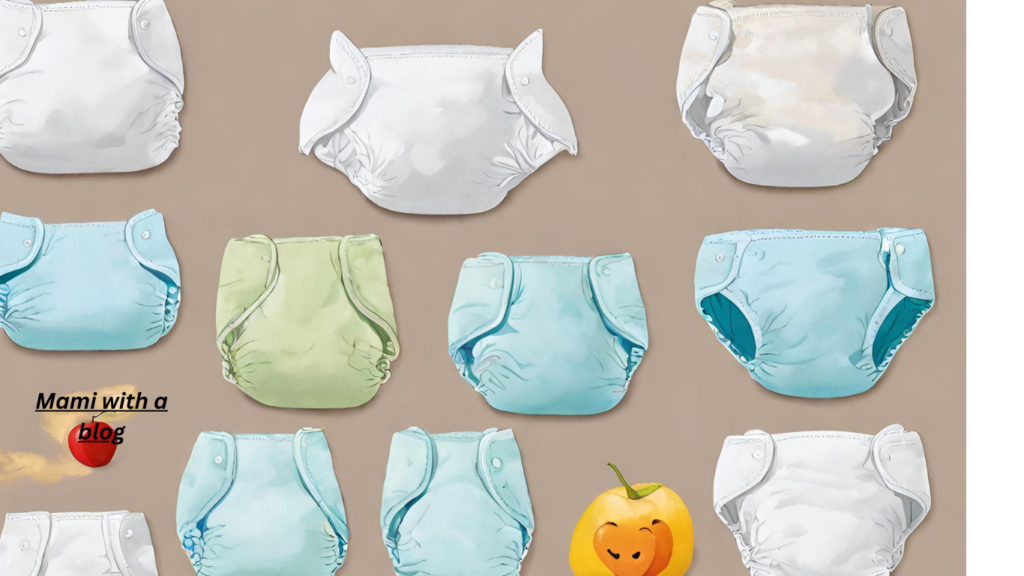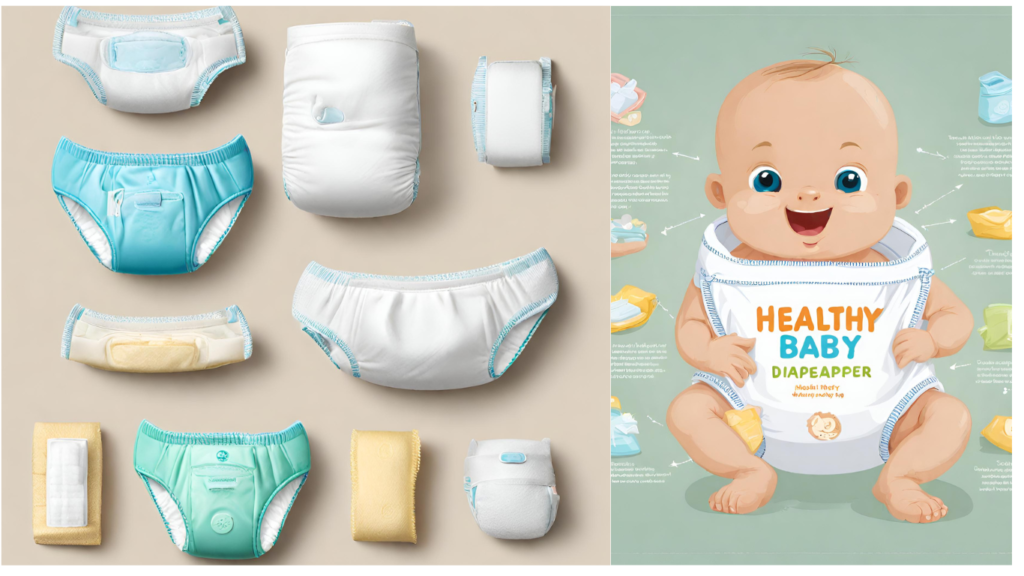
Introduction:
The sources of healthy baby diapers are diverse, reflecting the growing awareness and demand for eco-friendly, hypoallergenic, and sustainable options in the market. Here are some key sources:
Organic Materials:
Many healthy baby diapers are sourced from organic materials such as organic cotton, bamboo fibers, and other plant-based materials. These materials are chosen for their softness, breathability, and minimal environmental impact. These organic materials into the production of healthy baby diapers reflects a commitment to providing parents with sustainable, eco-friendly, and health-conscious options for their little ones. The combination of these materials aims to create a diapering experience that prioritizes both the well-being of babies and the health of the environment.
Organic Cotton:<br>Source: Organic cotton is cultivated without the use of synthetic pesticides, herbicides, or genetically modified organisms (GMOs). It is grown using natural and sustainable farming practices.
Benefits: Organic cotton is known for its softness, breathability, and hypoallergenic properties. It reduces the risk of skin irritation and is gentle on a baby’s delicate skin. Additionally, organic cotton farming promotes soil health and reduces environmental impact.
Bamboo Fibers:
- Source: Bamboo is a fast-growing plant that requires minimal water and no pesticides to thrive. Bamboo fibers used in diapers are often derived from the pulp of the bamboo plant.
Benefits: Bamboo is exceptionally soft, absorbent, and naturally hypoallergenic. It has antimicrobial properties, making it an ideal material for preventing the growth of bacteria. Bamboo is also biodegradable, contributing to the sustainability of diaper materials.
Corn-Based PLA (Polylactic Acid): - Source: PLA is a bioplastic derived from fermented plant sugars, usually obtained from corn starch. It is used in the manufacturing of diaper components like liners and packaging.
Benefits: PLA is renewable and biodegradable, making it an eco-friendly alternative to traditional petroleum-based plastics. It breaks down more easily in composting conditions, reducing the environmental impact of diaper disposal.
Wood Pulp from Sustainable Forestry: - Source: Wood pulp used in diapers is often sourced from sustainably managed forests. These forests adhere to responsible forestry practices, ensuring that the impact on ecosystems is minimized.
Benefits: Wood pulp is a key component in the absorbent core of diapers. Sustainable forestry practices promote biodiversity, protect ecosystems, and contribute to the overall health of the planet.
Recycled Materials: - Source: Diaper brands committed to sustainability often incorporate recycled materials, including recycled plastics, in various components of the diaper.
Benefits: Using recycled materials helps reduce the demand for virgin resources and minimizes waste. This approach contributes to a circular economy by repurposing materials that would otherwise end up in landfills.
Certified Organic Dyes and Inks: - Source: The dyes and inks used for printing on diapers come from certified organic sources, ensuring that they meet strict standards for environmental and health considerations.
Benefits: Certified organic dyes are free from harmful chemicals and toxins, making them safe for your baby’s skin. This choice aligns with the overall commitment to providing a healthier and more sustainable diapering option.
Natural Rubber: - Source: Natural rubber, derived from the sap of rubber trees, is used in some diaper waistbands and leg cuffs.
Benefits: Natural rubber is a renewable resource, and its use reduces dependence on synthetic rubber, which is derived from petroleum. It is elastic, providing a comfortable fit without compromising on sustainability.
Certified Organic Wool: - Source: Wool, sourced from organically raised sheep, is used in some diaper covers or liners.
Benefits: Certified organic wool is free from synthetic pesticides and chemicals. It is naturally breathable, moisture-wicking, and provides temperature regulation, making it an excellent choice for diaper covers.
Biodegradable Components:
Eco-friendly diapers often incorporate biodegradable components, such as plant-based plastics derived from cornstarch or other renewable resources. These materials break down more easily in landfills, reducing the overall environmental footprint.
Sustainable Forestry Practices:
Some diaper brands prioritize sustainable forestry practices, using wood pulp derived from responsibly managed forests. This ensures that the raw materials for the diapers are sourced in an environmentally conscious manner.
Recycled Materials:
Some diaper brands are committed to using recycled materials, contributing to the reduction of waste and promoting a circular economy. Recycled plastics and other materials are incorporated into the manufacturing process to create eco-friendly diaper options.
Manufacturing Processes:
The source of healthy baby diapers also lies in the manufacturing processes employed by brands. Companies that prioritize eco-friendly practices in their production, such as minimizing water usage, reducing energy consumption, and using eco-conscious facilities, contribute to the overall sustainability of the diapers.
Innovative Technologies:
Diaper brands often invest in research and development to incorporate innovative technologies that enhance the performance of diapers. These technologies may include advanced absorbent materials, leak-proof designs, and features that promote optimal comfort for babies.
Transparent and Ethical Supply Chains:
Brands committed to healthy and sustainable diapers often emphasize transparency in their supply chains. This includes ensuring fair labor practices, ethical sourcing of materials, and providing consumers with clear information about the origins of the diaper components.
Research and Development:
The ongoing research and development efforts in the diaper industry contribute to the evolution of healthier and more sustainable diaper options. Companies invest in understanding the needs of babies, improving materials, and developing diapers that meet both performance and environmental standards.
Consumer Feedback and Collaboration:
Diaper brands actively engage with consumer feedback and collaborate with parents, environmental organizations, and experts to continually improve their products. This collaborative approach helps in sourcing materials and designing diapers that align with the health and environmental priorities of consumers.
Certifications and Standards:
Diapers that are certified by reputable standards, such as organic certifications or eco-labels, often source their materials in accordance with strict guidelines. These certifications provide consumers with assurance regarding the quality and sustainability of the diapers.
In summary, the sources of healthy baby diapers encompass a wide range of materials, manufacturing practices, and innovations aimed at providing parents with options that prioritize the well-being of babies and the environment. As consumers increasingly seek sustainable and health-conscious choices, the diaper industry continues to evolve to meet these demands.
You might be interested in this post as well “Cloth Diapers”
Frequently Asked Questions (FAQ):
a. How do I choose the right size of healthy baby diapers for my little one?
Selecting the correct diaper size is crucial for your baby’s comfort and leak protection. Most diaper packages provide weight guidelines, but also consider your baby’s body shape. A snug but not too tight fit around the legs and waist is ideal.
b. Are eco-friendly diapers as effective as traditional ones?
Absolutely! Many eco-friendly diaper brands prioritize both effectiveness and sustainability. Advances in technology have allowed for the development of diapers that offer top-notch performance while minimizing environmental impact. Our reviews highlight options that excel in both areas.
c. What makes hypoallergenic diapers different, and are they suitable for all babies?
Hypoallergenic diapers are crafted with materials designed to minimize the risk of skin irritation and allergies. While they are suitable for most babies, each baby’s skin is unique. If your baby has sensitive skin or allergies, hypoallergenic diapers are an excellent choice. Always consult with your pediatrician if you have specific concerns.
d. How can I ensure that healthy baby diapers are gentle on my baby’s skin?
Our selected healthy baby diapers prioritize gentle materials, such as cotton or bamboo fibers, which are known for their softness. Additionally, avoiding diapers with harsh chemicals, fragrances, and dyes can contribute to a gentler experience for your baby’s delicate skin.
e. Do healthy baby diapers contribute to a more sustainable environment?
Yes, many of the healthy baby diapers we review incorporate eco-friendly practices. These may include the use of biodegradable materials, minimalistic packaging, and sustainable manufacturing processes. Choosing such diapers not only benefits your baby but also contributes to a healthier planet.
f. How do I prevent diaper leaks, especially at night?
Our in-depth reviews cover diapers specifically designed to address leak protection. Look for features like extra-absorbent cores, snug leg cuffs, and innovative designs aimed at preventing leaks. Nighttime diapers, in particular, are engineered to offer extended protection, ensuring a dry and comfortable night’s sleep for your baby.
g. Can I use healthy baby diapers for newborns, or should I opt for specific newborn diapers?
While some healthy baby diapers are suitable for newborns, specific newborn diapers often come with features like an umbilical cord cut-out and a more contoured fit. Our reviews include options that cater to the unique needs of newborns, ensuring optimal comfort and care during those precious early days.
h. Are there any additional benefits to using eco-friendly diapers besides environmental consciousness?
Absolutely! In addition to contributing to a healthier planet, many eco-friendly diapers are made from renewable resources and lack harsh chemicals, making them gentler on your baby’s skin. Some parents also report fewer incidents of diaper rash when using eco-friendly options.
i. Can I still find cute and stylish designs in healthy baby diapers?
Yes, the world of healthy baby diapers has evolved to offer a variety of adorable and stylish designs. Our top picks include options that not only prioritize your baby’s health but also cater to your aesthetic preferences. Diapering can be practical and fun at the same time.
j. How do I dispose of eco-friendly diapers, and are they truly biodegradable?
The disposal method varies by brand, so always check the manufacturer’s guidelines. Many eco-friendly diapers are designed to be compostable or biodegradable, but it’s essential to follow specific instructions for disposal. Some brands provide compostable diaper services for added convenience.
In conclusion, our FAQ section aims to address your most pressing questions, ensuring that you feel confident and informed when selecting healthy baby diapers for your little one. If you have additional inquiries or concerns, feel free to reach out, and let Mamiwithablog be your partner in the exciting journey of parenthood!


Pingback: Healthy Baby Diapers Review - Mami With A Blog
Pingback: Choosing the Perfect Cloth Diapering Fabric - Mami With A Blog